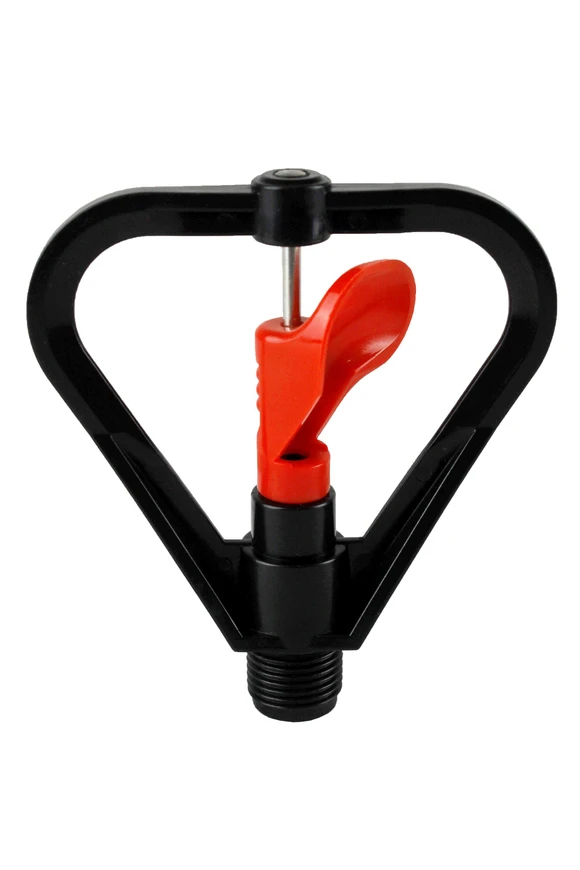Overhead Sprinklers For Irrigation
Grekkon Limited is an irrigation equipment supplier in Kenya. We design, supply, and install all types of overhead sprinklers for irrigation systems, for every acreage and crop. Our overhead sprinklers for irrigation in Kenya are of different types, for different crops, acreage and locations. This is why our technical or agronomy team will visit a grower who needs to install one
It is to assess the land layout and size, topography, water location, water volume, existing water pump if any, and the crop. Through this survey, we recommend the most appropriate sprinkler irrigation kit for the grower based on their budget. For instance, a grower with 100 acres of orchard will have a different sprinkler from a 100 acres of a park covered with grass. Similarly, a farmer on an 1/8 acres of cabbage will have a different sprinkler irrigation kit than the one with 30 acres of cabbage
Overhead Sprinklers For Irrigation
Types
We have these 5 overhead sprinklers for sale types shown below available. For most, there are both metallic and plastic versions. Metallic sprinklers have a longer lifespan, but are costlier and heavier. Plastic sprinklers are lighter, cheaper, but have a shorter period of operation. The body material does not affect the pressure rating, inlet and outlet sizes or the water discharged. For technical details on each type, click on the title links given for every sprinkler
- Rain gun sprinklers for medium-sized to large acreage. Available sprinkler sizes are; 1″, 1-1/4″, 1-1/2″, 2″, and 2.5″. We supply and install the double nozzle PY, Atom, and flange type rain guns. The latter are for broad acreage and require very high water volume, and high operating pressure
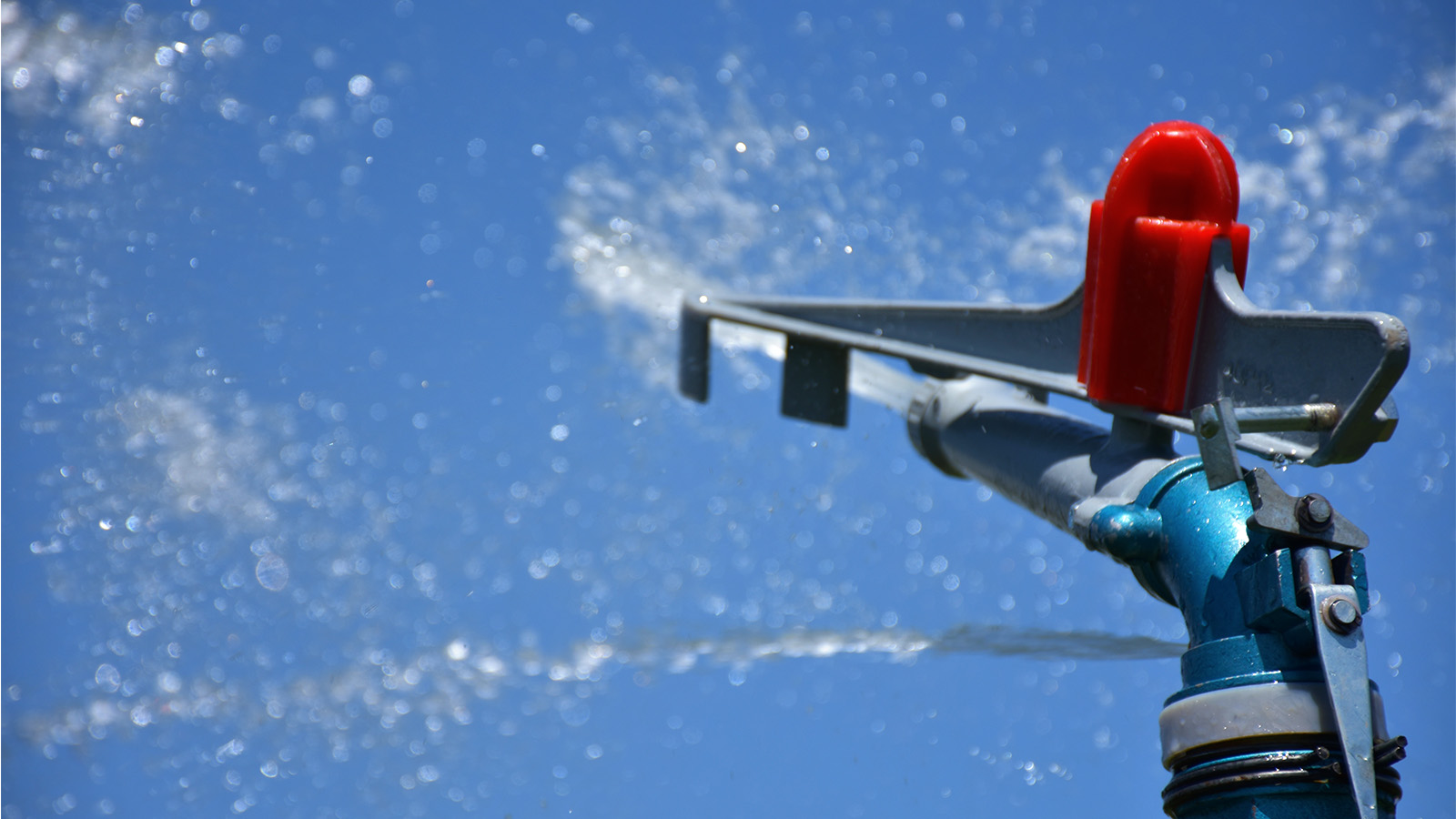
An ordinary size rain gun sprinkler at work after installation by Grekkon Limited
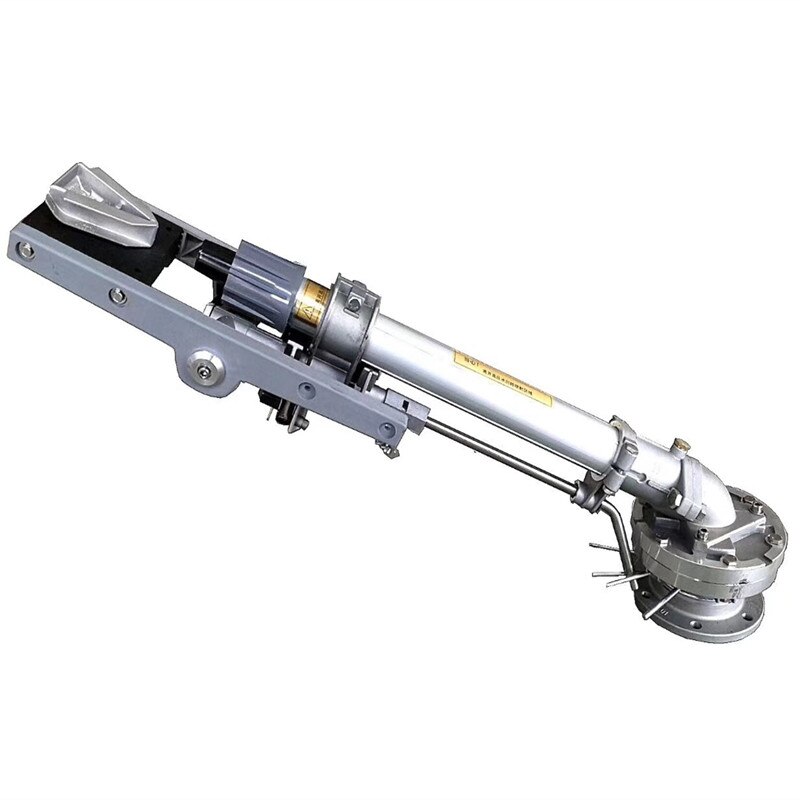
2.5″ giant flange type rain
A flange type rain gun video at work
2. Plastic or brass impact sprinklers for small to medium sized acreage. Our sizes are; 1/2″, 3/4″ and 1″ which have either 2-way, 3-way or 4-way nozzles
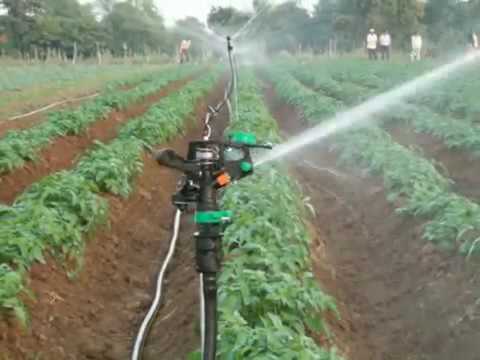
Plastic impact sprinklers
3. Mega-net sprinklers for small to medium-sized areas. We have the 1/2″, 3/4″ and 1″ which have a spray angle of 180 degrees
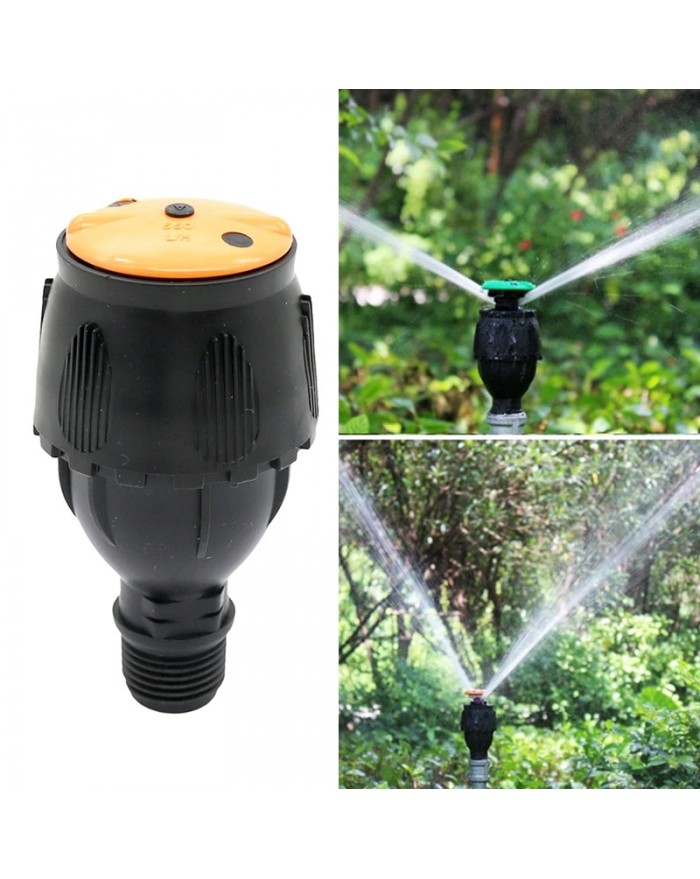
A mega net sprinkler
4. Micro sprinklers for orchards and small areas with a spray angle of 360 degrees
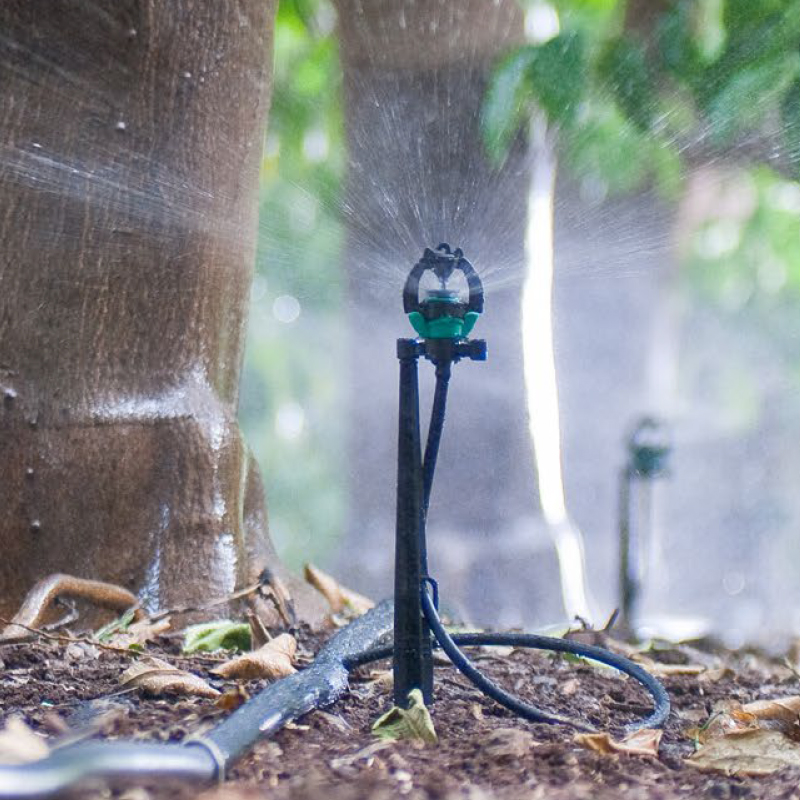
Micro sprinklers in an orchard
5. Pop up sprinklers for lawn irrigation. Our sizes are1/2″ and 3/4″ which spray up to 360 degrees
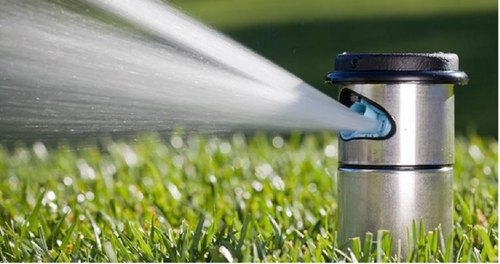
A lawn pop up sprinkler
6. Butterfly mini sprinklers for small gardens or and lawns available as 1/2″
How to choose your overhead sprinklers in Kenya
- Land size. Rain guns for large acreage, and micro-sprinklers for small plots of land
- Crop type. Pop-ups for lawn irrigation, all other sprinklers for field crops
- Ground elevation. Gravity power from high elevations will swing micro and impact sprinklers. Rain guns, Meganets, and pop-ups work with water pumps
- Grower’s budget. It determines the sprinkler type and number of units to install
Our sprinkler irrigation system design considers the above 4 factors during our site visits conducted before a sprinkler irrigation system is installed
Components of an overhead sprinkler irrigation system
- Mainline. This is PVC, HDPE, or GI to supply water from the source. It will be connected directly to the sprinkler riser pipe, or to the sub-main line
- Sub mainline. This one is connected directly to the sprinkler rise pipe, or to the sprinkler itself from the mainline. It is also PVC, HDPE, GI or a delivery/ layflat pipe
- Riser pipe. This receives water from the main line or sub-main line to the sprinkler It is also PVC, HDPE, or a GI
- Tripod or pipe stand. It is the sprinkler’s support structure
- Gate valves. They allow or block water flow to the sub mainline
Overhead sprinkler prices in Kenya per acre
- Rain gun sprinkler system from Kes 65,000
- Impact and Mega-net sprinklers from Kes 50,000
- Butterfly and Micro jet sprinklers from Kes 85,000
- Pop-up sprinklers from Kes 120,000
FAQs
A. What are the pros and cons of an overhead sprinkler irrigation?
I. Overhead sprinkler irrigation advantages
- There is a wide choice to select from
- It is easy to install
- It is cheaper than drip irrigation
- Easy to move from one point of the farm to another
II. Disadvantages
- It is water wasteful
- During strong winds, water distribution is uneven
- High running cost because a water pump is needed
- It requires labour to move it from one location to another if it’s a portable system
B. How does an overhead sprinkler irrigation system work?
- Water is pumped under high pressure from the source; tank, reservoir, lake, river to the mainline
- From the mainline, it is distributed to the sub-main lines
- From the sub-mainlines, it enters the sprinklers under pressure. This pressure swings the sprinkler in a circular motion
- The sprinkler breaks the water into fine droplets, which fall on the crop
C. How do I choose a water pump for my sprinkler system?
Consider the following when selecting a sprinkler water pump
i. Pressure rating of the sprinkler. The water pump’s pressure rating must exceed that of the sprinkler to compensate for pressure losses in the piping system. Grekkon Limited’s technical team advises growers on the best match. The larger the pipe diameter, the lower the pressure loss along the horizontal pumping distance. The longer the horizontal and vertical pumping distance, the greater the pressure loos. Pressure loss during irrigation water reticulation is also as a result of leakages along the piping system
ii. Discharge rate of the sprinkler. Like the pressure rating above, this will be higher for the water pump to cater for any fluid losses
iii. Inlet diameter of the sprinkler. That of the pump has to match this
D. Which sprinkler head is best?
Rotor sprinklers are the most efficient sprinklers in the market. They have the least run-off, and irrigate slowly, hence less wastage
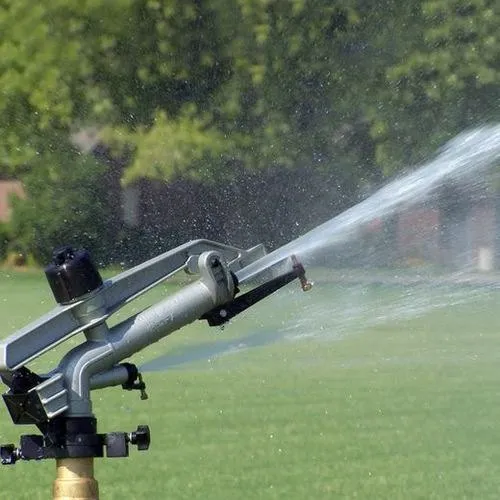
Long Range Sprinkler
Our long range sprinkler models irrigate large acreage of horticulture, fruit, corn, wheat, barley, canola, and potato crops. Every long range sprinkler in Kenya by Grekkon Limited is from 1-1/2” to 2-1/2” inlet diameter size. These sprinklers provide fine rain drop sized watering in the field when operating at optimal capacity
Long range sprinkler specifications
- Material. Aluminum, brass, and steel
- Nozzle sizes. 12mm, 16mm, 18mm, and 20mm
- The diameter of spray. 35M to 40M for the 1-1/2” and 45M to 60M for the 2”
- Discharge volume. 15 cubic to 30 cubic per hour for the 1-1/2” and 20 cubic to 45 cubic per hour for the 2″
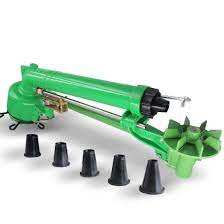
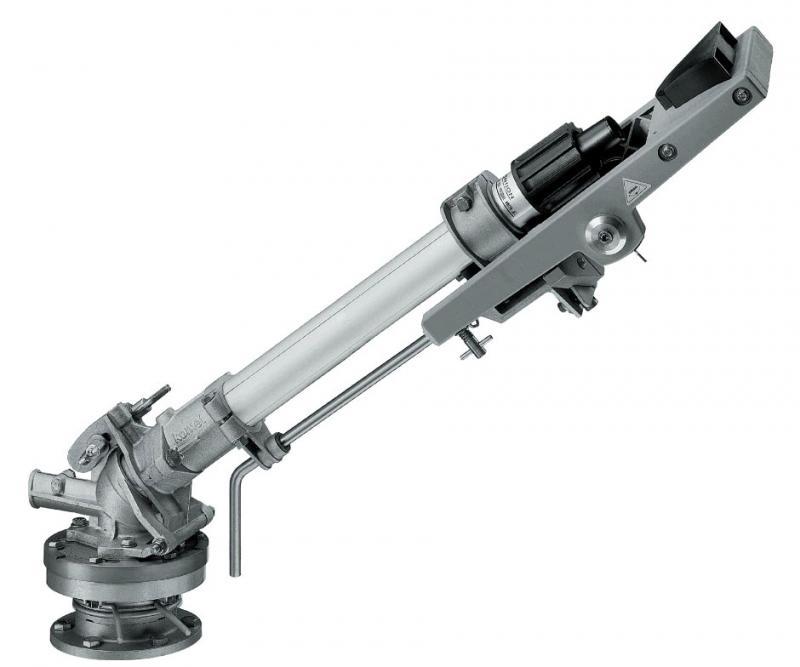
Note that the diameter of spray and discharge volume is a factor of the nozzle size and diesel or electric pump capacity (engine/ motor size, pressure rating, and discharge rate)
How much is a long range sprinkler in Kenya?
- 1-1/2” is Kes 55,000
- 2” is Kes 65,000
This cost is inclusive of the steel tripod stand
How to work with long range sprinkler requirements
i. Water availability. It requires 30 cubic per hour as a minimum. If irrigation takes 5 hours per day, then 150 cubic must be available
ii. Pressure. Check your ground elevation, determine your pressure loss in the system and your pipe size. Work backward to determine the water pump type that matches your sprinkler choice. The frictional losses along the pipeline will be taken into consideration too
iii. Crop water requirement. This determines the time spent in irrigation
iv. Land size. This will determine the number of units to run per session

A long range 2″ rain gun sprinkler on display at Grekkon Limited’s ware house in Athi River
Long range sprinkler
FAQs
1. How much does a sprinkler system cost in Kenya?
The cost of a sprinkler system in Kenya is from Kes 55,000 per acre depending on the sprinkler type and number of sprinklers installed
2. What is the distance of a rain gun?
This is from 17M to 50M diameter of spray
3. How much HP motor is required for a rain gun?
A ran gun sprinkler will work with a fossil fuel powered water pump with an engine power from 7.5Hp
4. What pressure is needed for a rain gun?
From 3 bars or 30M lift
5. How to select a long range sprinkler?
Consider the following
- water volume available
- the water pump specifications
- the lift or ground elevation
- the acreage under irrigation
- your budget
6. What are the benefits of a long range sprinkler system?
- it irrigates over a short period of time saving energy
- it is movable
- there are different sizes to choose from
- it covers both small and large acreage
- it is easy to install
- a large volume of water is provided
- it raises the humidity level around the crop
7. What are the disadvantages of a long range sprinkler?
- it consumes copius amounts of water
- it requires a large water pump for energy
- if left operational for a longer than recommeneded period, it causes soil erosion
- it will not work with gravity flow as the pressure is too low
- it is unsuitable for certain crops because they cause flowe rabortion or make them more susceptible to fungal infections when the foliage is left moist
8. How efficient is a rain gun?
It uses half the water volume that flood irrigation would use. However, it uses more than 3 times what would be achieved under drip irrigation
9. What is the diameter of a rain gun sprinkler?
The diameter of a rain gun sprinkler is from 1″ through 2-1/2″
10. How long does a sprinkler system last?
From 20 years under proper care for the metallic types, and just under 5 years for th plastic analogues
11. How effective is rain gun irrigation?
It is carried out for many crops so long as there is sufficient water volume at the source. It is particularly useful for crops that have large spaces in between
12. What is the difference between rain gun and drip irrigation?
- water application. Rain guns apply from the top (overhead), while drip pipes apply from below
- water efficiency. Drip irrigtaion is more water efficient
- cost. drip irrigation systems are more expensive to install
- crop type. drip irrigation will be used for more crop types than rain gun sprinklers
- rain gun sprinklers unlike drip lines will be installed in uneven terrain
- rain gun sprinklers are preferred most under large acreage
13. How many minutes should I run my rain gun?
Depending on the rain gun size, this is from 15 minutes for the large ones, to 35 minutes for the smaller types. Irrigation is done twice a week
14. How do you maintain your sprinkler system?
- ensure that there are no blockages
- clean any debris stuck
- change or repair any loose springs
- limit the number of operators to one 2 persons only

A 2-1/2″ long range rain gun sprinkler at work
Long range sprinkler
Your long range rain gun sprinkler will have a tripod steel support stand. The water delivery pipe is attached to the hollow bottom of the stand. The diameter size of this hollow bottom is the sprinkler’s size
The water drops are fine to use on flowering crops without causing flower abortion. On solanaceous crops such as; tomatoes, potatoes, peppers, irrigate in the morning hours and not in the evening. This allows the moisture to dry off from the leaves, which minimises blight or mildew infection
Before installation, our technical team makes a site visit to make the system layout plan. This is important to ensure that every inch of the farm is covered during irrigation and that there are no dry shadows
These giant sprinklers irrigate over a short period of time, in a large area

